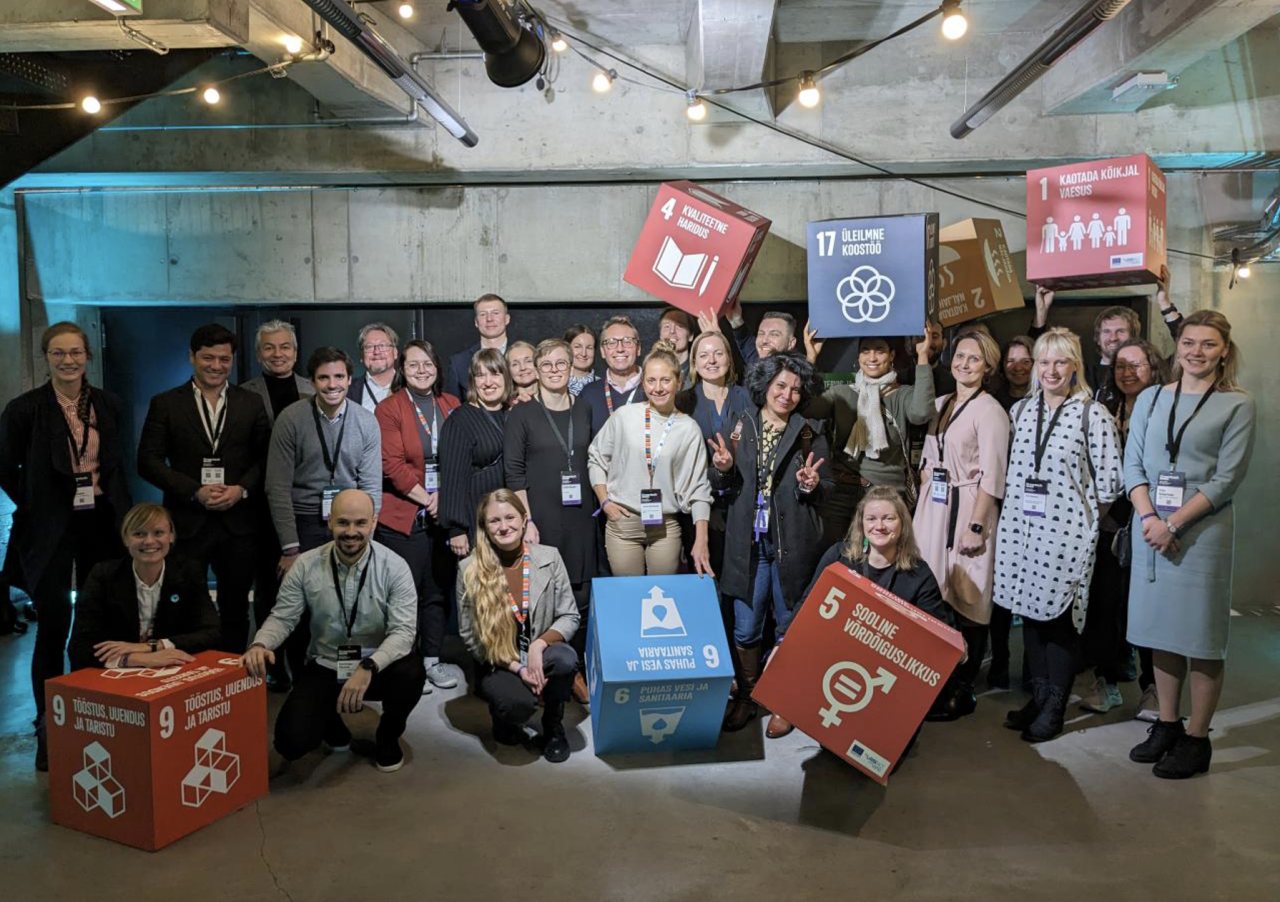Hundreds of events are currently taking place as part of European Sustainable Development Week 2024. With one more week of ESDW activities still to go, we want to bring attention to URBACT cities implementing the 17 UN Sustainable Development Goals (SDGs) at local level.
Learn about the Cities for Sustainability Governance Network, its nine partner cities’ shared story, and a way forward for community-driven sustainable urban development.
Why sustainability governance?
When it comes to the UN SDGs, the latest buzz has sounded more like an alarm: the world is not on track to achieve the 17 goals according to the latest progress reports. With regard to cities (SDG 11), no European city has achieved the goals, while the OECD estimates that around 65% of all SDG targets depend on actions by local and regional governments.
Why is progress not happening fast enough? Solving this ‘action gap’ requires new models for how we govern sustainability and deliver results for and together with our communities (otherwise known as ‘sustainability governance’). Based on the UN 2030 Agenda and SDGs’ definition of ‘sustainability’, what do we mean by ‘governance’? In short, governance deals with the question of how cities can deliver better results (towards SDGs), together with and for their communities. It focuses both on internal processes and structures and on relationships with stakeholders.
Mayor Ricardo Rio of Braga (PT) puts it simply: “I always say that the SDGs are our ‘way to quality of life’, so that when we are fulfilling the goals, we are trying to create conditions for people to be happier in our city and to have better quality of life”. The following video features more takes from Mayor Rio on the role of local governments in driving sustainable urban development:
While cities may be committed to sustainable development in practice and creating the basis for people's quality of life, they are not always listened to, mandated and resourced properly to deal with the expectations put on them. Making the voice of cities louder in global sustainability discourse is imperative.
The next section zooms in on nine cities using the SDG framework to create holistic long-term strategies that meet local needs and challenges.
Origin stories: An URBACT network on sustainability governance
The URBACT IV programme has launched the first round of 30 Action Planning Networks running from 2023 to 2025 along different thematic areas. Under the ‘Participative governance’ theme, Cities for Sustainability Governance (CSG) looks at how cities can design, implement, and operate strategic and community-driven solutions to sustainability challenges in all its dimensions: economic, environmental and social.
The CSG Network has nine partner cities – Agios Dimitrios (EL), Braga (PT), Espoo (FI), Gabrovo (BG), Jablonec nad Nisou (CZ), Kosice (SK), Mannheim (DE), Tallinn (EE) and València (ES). Together, the cities want to prove that the SDGs cannot only be localised (contextualised) but actually guide the way for sustainable cities of all sizes.
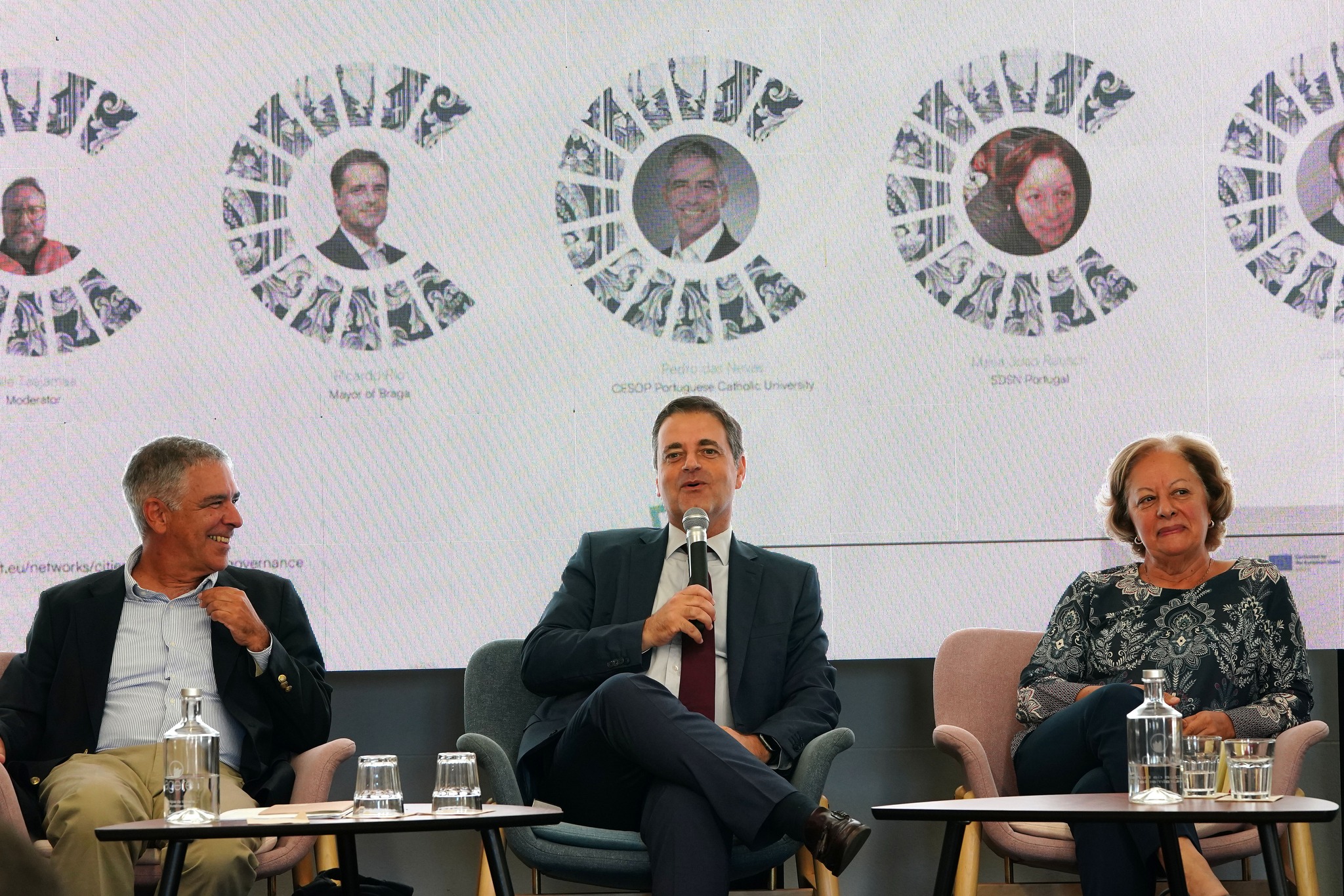
CSG Transnational Meeting in Braga, September. Source: Cities for Sustainability Governance.
Four pillars of sustainability governance
Acknowledging that each city has its unique local context and challenges, the CSG Network has come up with four common pillars to analyse the current situation in different cities with regards to sustainability governance. Based on these pillars, each partner is designing and implementing their priorities and actions.
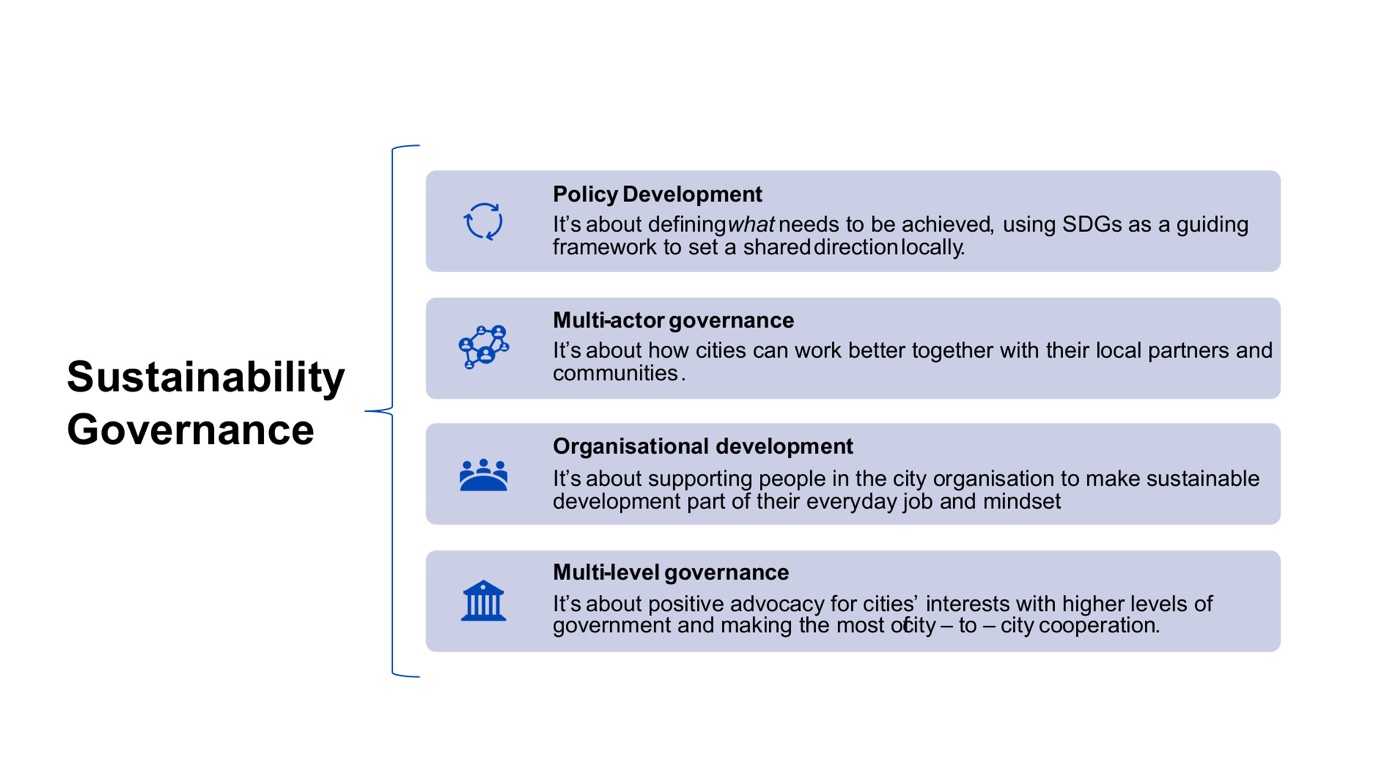
1. Policy Development pillar: defining what needs to be achieved, using SDGs as a guiding framework to create a shared direction locally
At the start, some partners were already frontrunners on sustainability governance: Espoo with the ‘Espoo Story’, Mannheim with its 2030 Mission, Braga’s strategic management model, and Tallinn’s 2035 development strategy – all of them integrate the SDGs into their design, execution and monitoring. Other cities in the network have the opportunity to start making more strategic use of SDGs. This is happening in Kosice (SK), and in Jablonec nad Nisou (CZ) there is a new department created for strategic planning that will work to improve how strategic concepts and plans are developed. The SDGs can be of great support here.
2. Multi-actor governance pillar: how cities can work better together with partners and communities
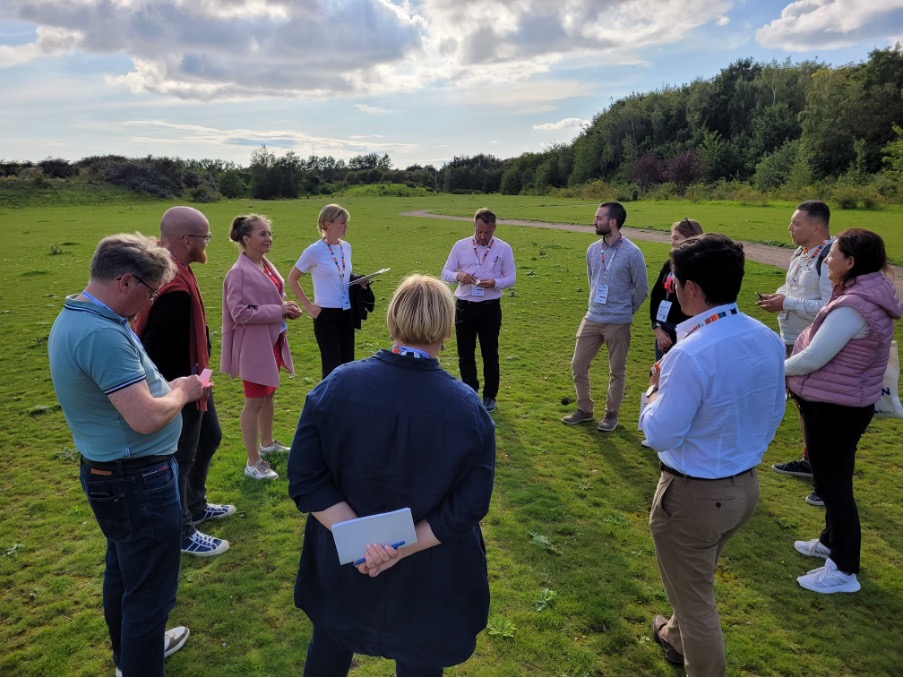
URBACT University Malmö 2023. Source: Suvi Jäntti.
Working better together in partnerships and with the community is key. This means using the growing combination of ‘Ps’ – Private-Public-People-Place-Partnerships – to deliver sustainable development. València (ES) is a lighthouse on this, having designed a multi-layered governance system according to the EU Mission. Similarly to Valencia, both cities of Gabrovo (BG) and Kosice (SK) are setting up participatory governance systems. Specifically, Gabrovo submitted a Climate City Contract, which confirms the city’s commitment to the EU’s 2030 climate neutrality target. In Agios Dimitrios (EL), a new participatory planning process is about to start with the new government as of 2024, drawing on a long tradition of community engagement.
3. Organisational development pillar: supporting people in the city organisations to make sustainable development part of their everyday job and mindset
Strong institutions with sustainability culture and mindset are needed. City administrations and civil servants are at the heart of the CSG Network, working hard to make sure that sustainable development is delivered in the best way possible using available resources. Using URBACT's problem tree tool, the lack of ‘sustainability mindset’ was highlighted as one of the root causes of the SDGs ‘action gap’. Equipping people with knowledge and understanding about sustainable development (and SDGs) is therefore key. What’s also needed is to make sustainable development part of everyone’s daily job, creating the right structures and routines – including resources – for departments to work together and for 'silos to dance'.
In Tallinn (EE), the Human Resources, Communication and International Relations departments are starting to work together to develop new course materials and internal communication actions to foster sustainability culture and mindset in the city administration. In Espoo (FI), all city staff can already access an online course on SDGs, among other sustainable development trainings.
Following Espoo’s example, Gabrovo (BG) is developing its own SDG-related card game as a fun and interactive way to engage the local community in sustainability efforts.
4. Multi-level governance pillar: positive advocacy for cities’ interests with higher levels of government and making the most of city-to-city cooperation
No city is an island, and sustainable development cannot be limited to administrative borders. That is why dialogue and cooperation across government levels (regional, national, EU, UN), as well as with other municipalities, is essential. It is also important to make sure that the benefits of city-to-city cooperation bring concrete results at the local level. In Braga (PT) and Gabrovo (BG), the mayors are essential and dynamic advocates at EU-level through the Committee of Regions (CoR) and can support the whole network in understanding how to better link up local, national and international work.
Braga's participation in the UN-Habitat global initiative for cities, and Gabrovo’s Innovation Camp (scheduled for November 2024) following the CoR quadruple helix model, are two concrete examples supporting the co-creation of solutions for effective communication on sustainable development.
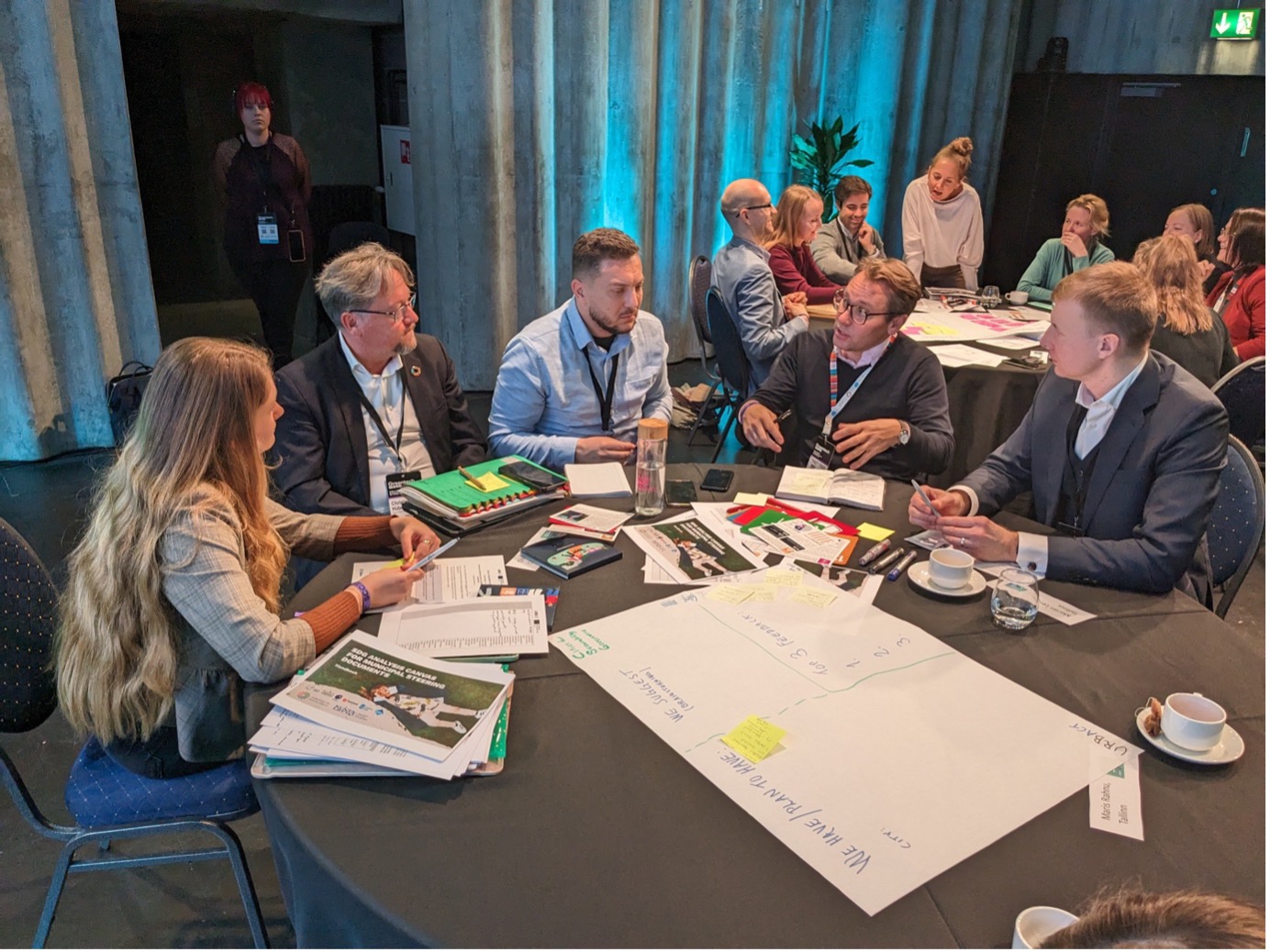 Source: Cities for Sustainability Governance.
Source: Cities for Sustainability Governance.
Storytelling and citizen engagement
Although it is an element across the four pillars, to close the SDG action cap, citizens need to be at the table, together with decision-makers from all levels. “Cities are as strong as their communities”, Lead Partner Coordinator Ville Taajamaa expresses some deserved optimism, adding, “After hours and hours of crunching expert urban sustainability talk, work and walk, the most important thing we had in our mind was our citizens. How cool is that!” This shared takeaway was already prevalent at the start of the Network, when CSG mayors and local representatives took part in interviews. They agreed that citizens and local communities need to be involved in the everyday work of cities.
To ensure citizen engagement, CSG has organised training sessions to help city officials communicate about the city’s vision for the future with citizens. This storytelling approach is an element of the URBACT Method, and in June 2024, CSG partner cities recorded real-life experiences during an intensive storytelling training session in Mannheim (DE).
Looking ahead: Cities and 2030 targets
The role of cities in creating future-proof societies is widely acknowledged, but sustainability governance for cities is not a one-size-fits-all concept. It will take different shapes according to the size, history, and geographical, socio-economic and cultural realities of our partner cities. Timing is also key, and persistent efforts are needed to make sustainable development ‘stick’ in an organisation.
Through all this, CSG is working on at least one element in this quest: community-driven and strategic governance through the 2030 Agenda and SDGs.
Want to learn more about Cities for Sustainability Governance? We invite you to visit the Network page. Get ‘city views’ and in-depth discussions from the Network’s webinar series.
Cities for Sustainability Governance is one of 30 URBACT Action Planning Networks selected to run between 2023 and 2025.
Get more expert takes on making the UN SDGs a reality in European cities, visit the URBACT Knowledge Hub.
This article was updated in October 2024. The original was submitted by Stina Heikkila on 06/12/2023. Many thanks as well to Sally Kneeshaw, CSG Lead Expert, and Ville Taajamaa, CSG Lead Partner coordinator, for their contributions.

